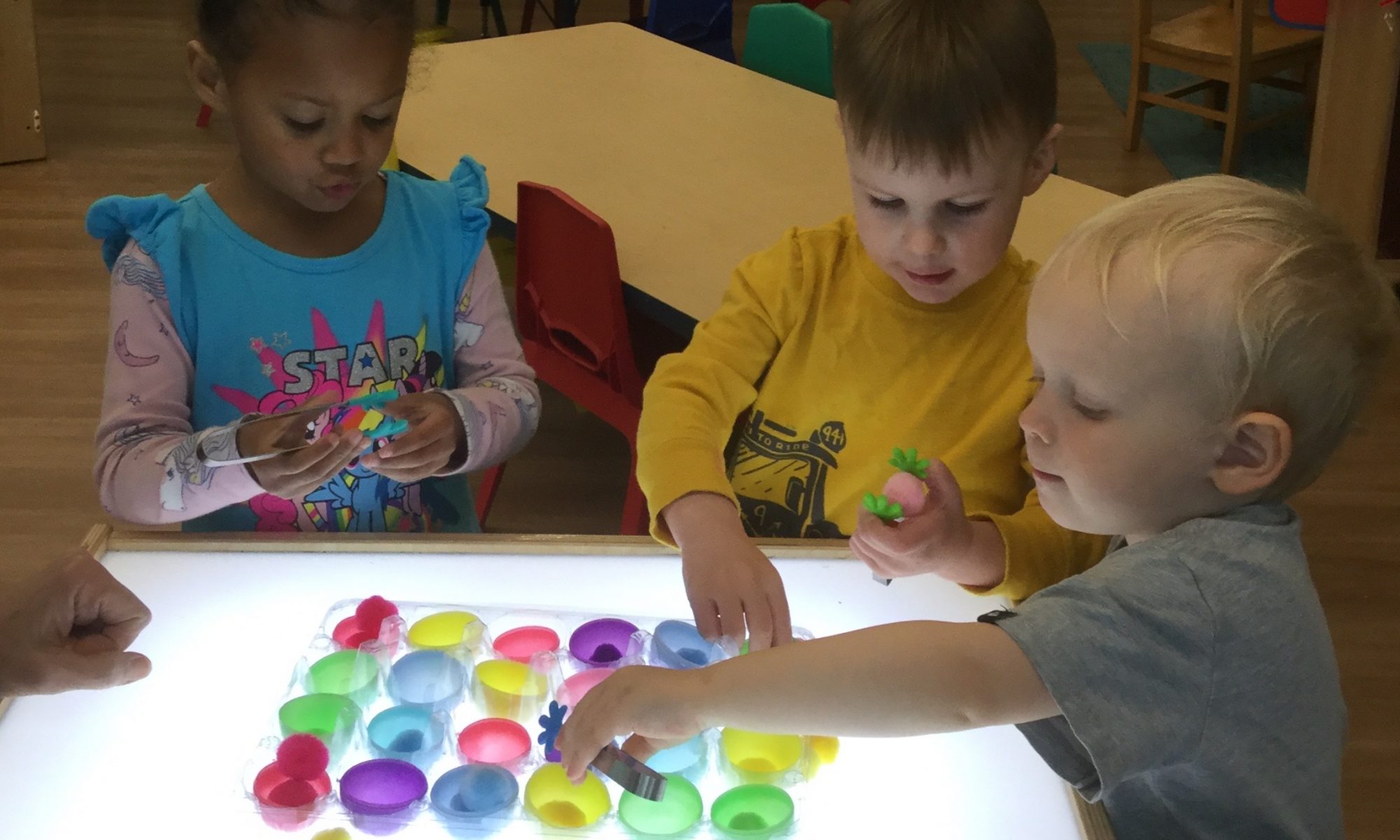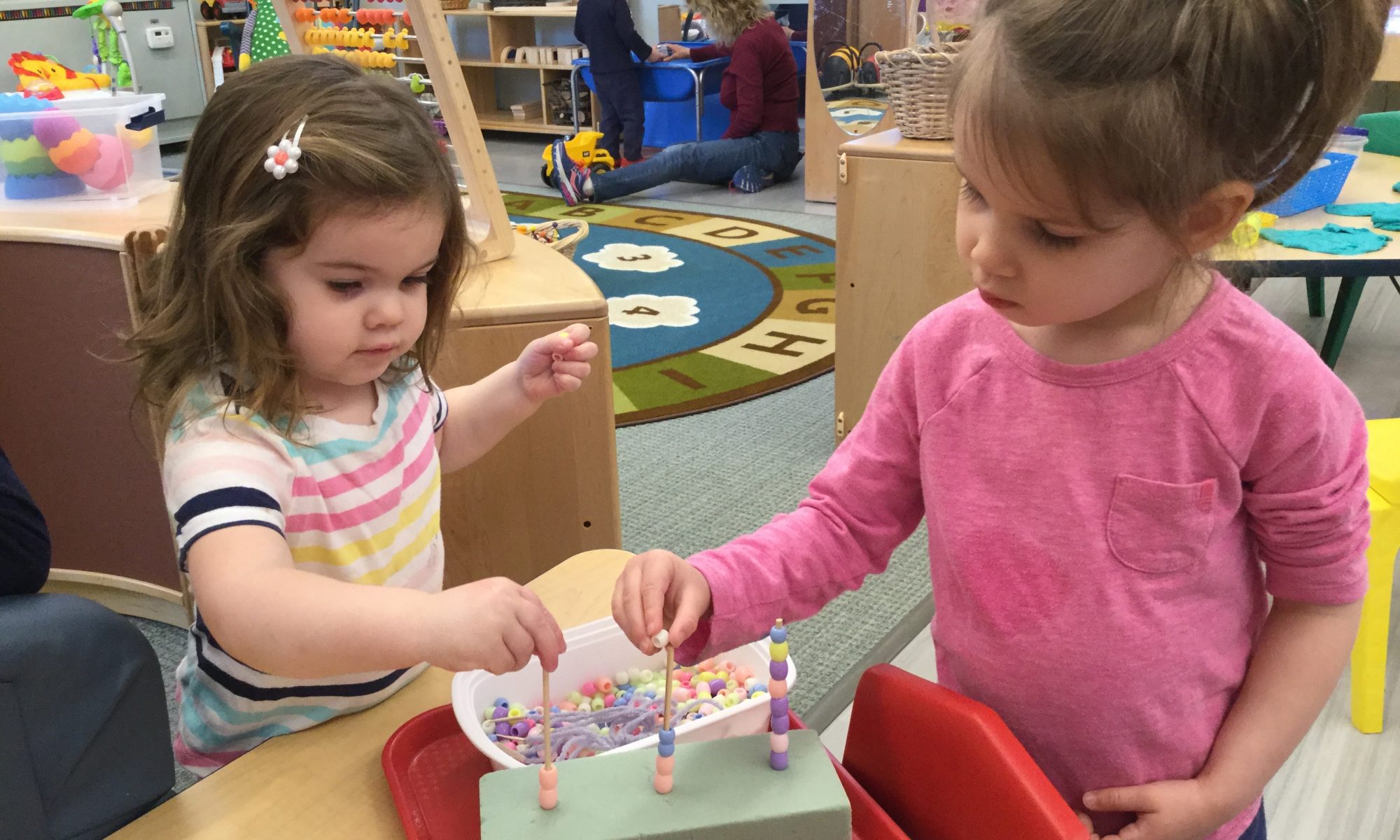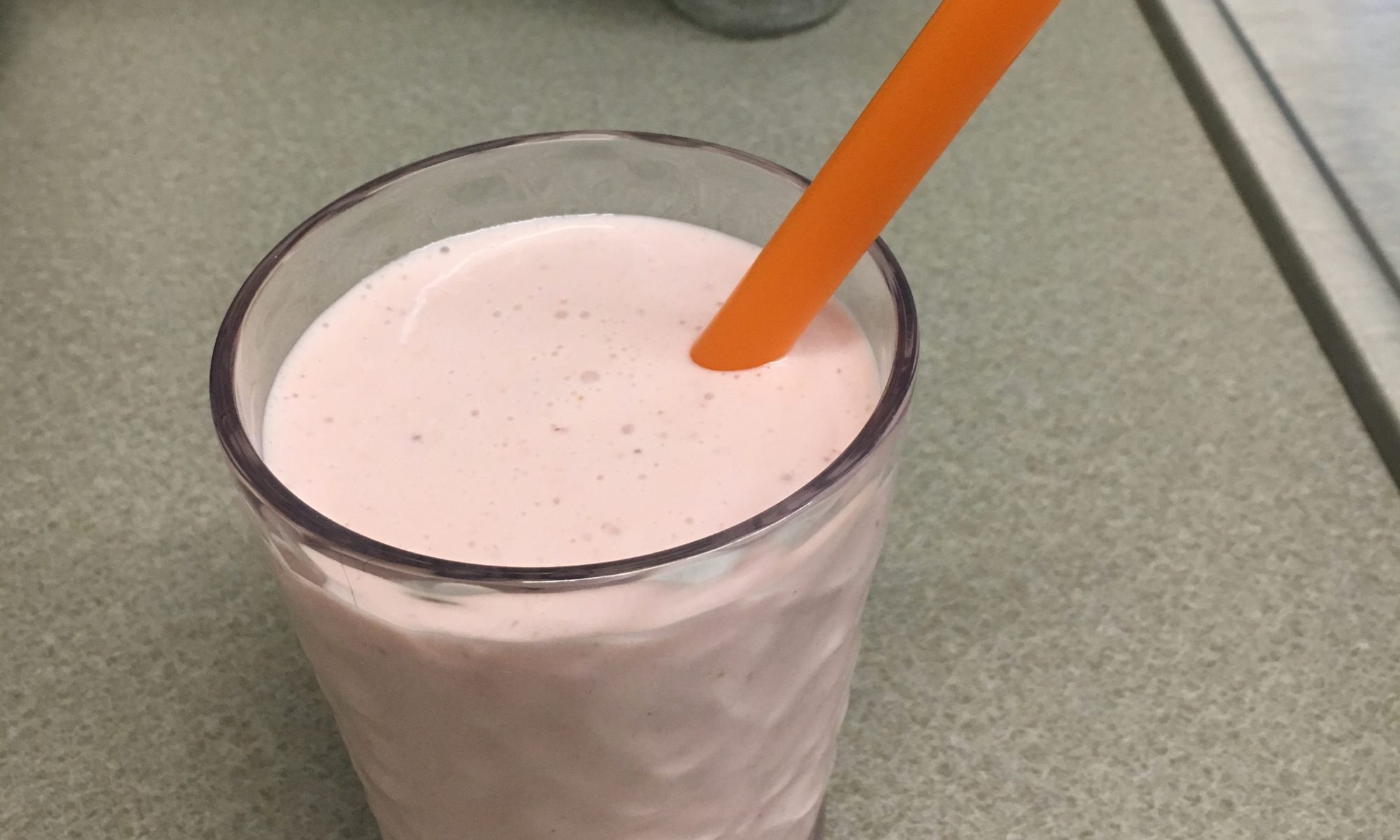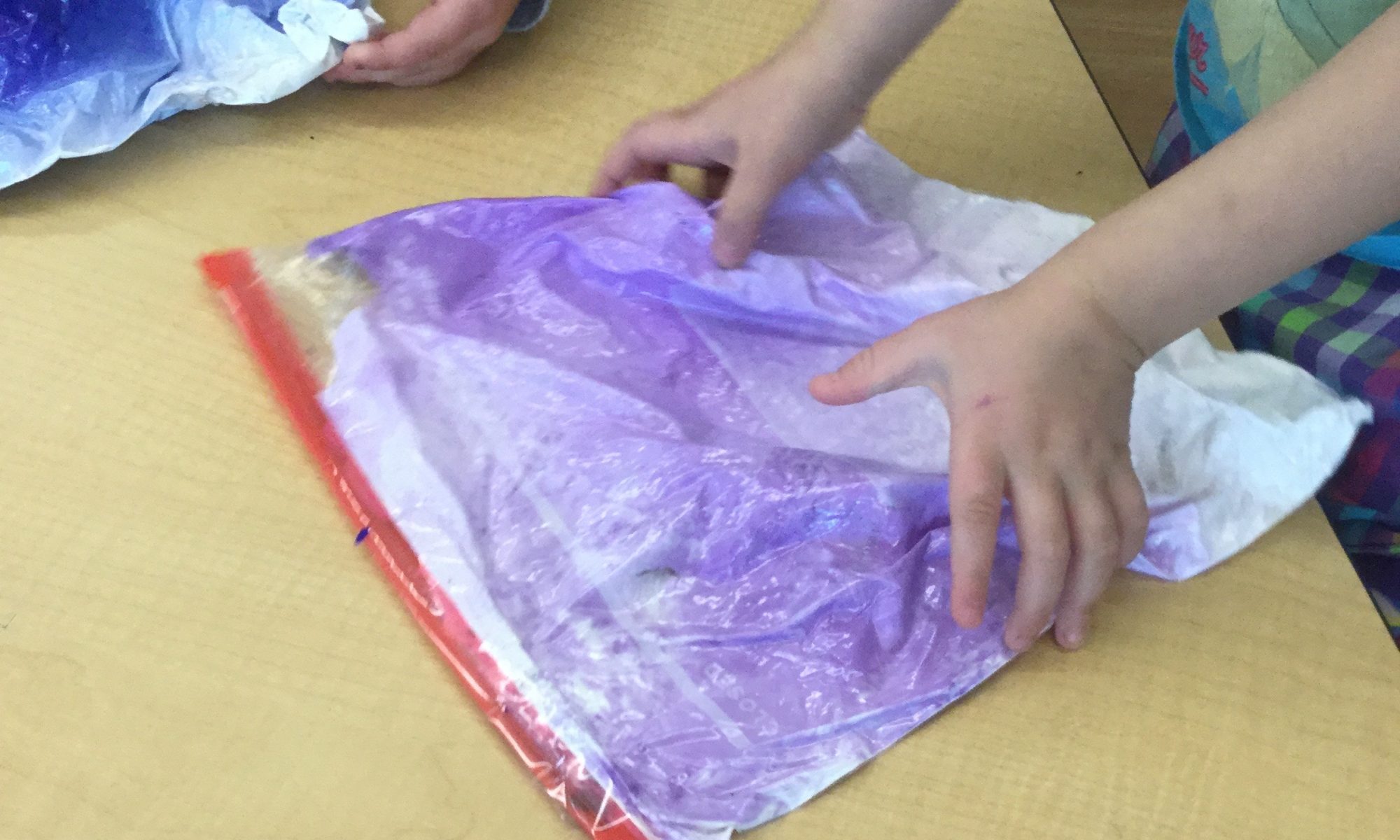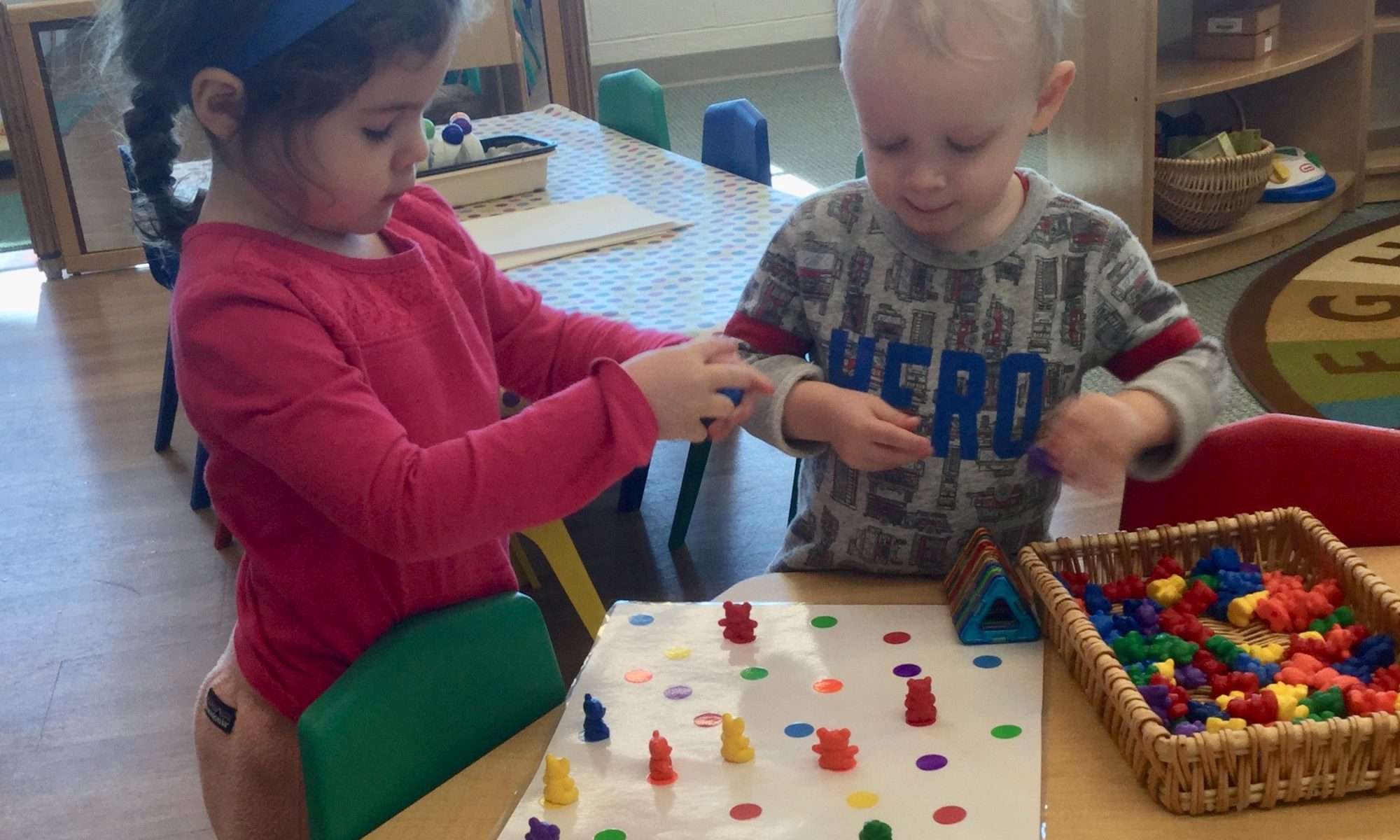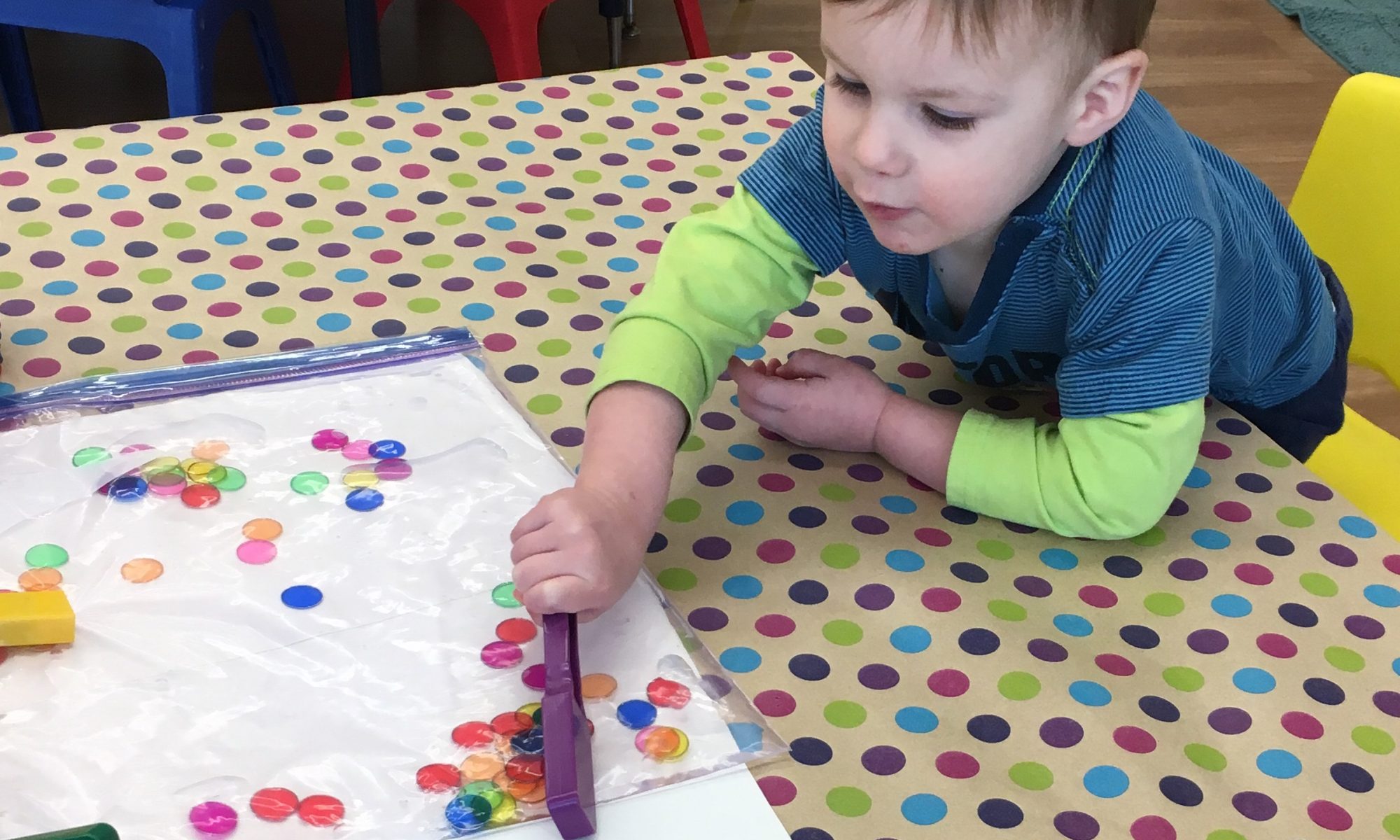Materials:
Plastic Easter eggs
Colored pompoms in hues that match the eggs
Empty egg carton (we used a carton that held two dozen)
Small tongs (optional)
Directions: Tis the season for Easter eggs, and we enjoyed this simple-to-assemble activity that gives practice in matching colors. Children older than three may have fun using tongs to manipulate the pompoms, but younger children will be less frustrated if they use their fingers.
Set the bottom of the egg halves in the egg carton. Place a small bowl or basket with the colored pompoms that match the eggs nearby. Pick a pompom up with the tongs, and place it in a matching egg half. Invite your little one to do the same. Very young children may place the pompom in any color, and that’s fine. You can ask him to see if he can find an egg that’s the same color as the pompom. If he shows no interest in color matching, the activity is more of an exploration of color, rather than an assessment. If he uses his fingers to pick up the pompom, he’s practicing his pincer grip, which is a bonus skill! An older child might like the challenge of manipulating the tongs to pick up the pompoms, which takes some practice to do successfully. Finally, when your child matches a pompom to the right color egg bottom, have him find the top of the egg and cap it off!

